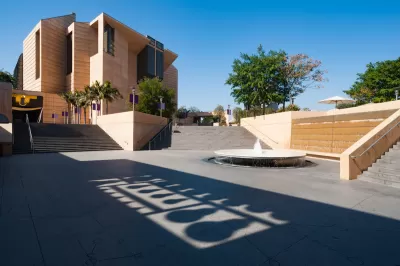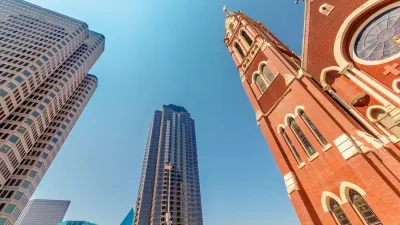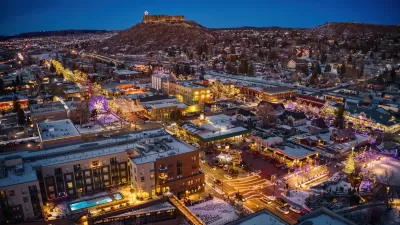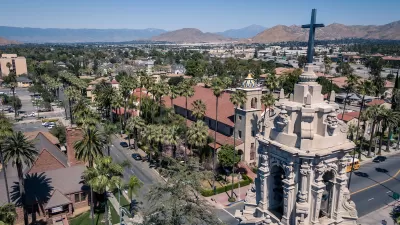A new California state bill lets churches and other faith-based institutions bypass environmental reviews for proposed affordable housing on their properties.

According to an article by Lynette Wilson for the Episcopal News Service, the Catholic Diocese of Los Angeles, which sprawls “from the Pacific Ocean to the northern tip of Santa Barbara County, east to Needles on the Arizona border, and south to the San Diego County,” plans to build affordable housing on 25 percent of the 133 church campuses it owns.
As Wilson explains, “The diocese’s churches are working with development partners to build and maintain apartment complexes on land held in trust by the diocese that’s being leased to its various partners.”
The project is part of a growing ‘Yes in God’s Backyard’ movement that calls on religious institutions to contribute to creating more affordable housing for people struggling to afford housing costs. The movement gained steam with the passage of California’s SB 4, which streamlines the permitting process for houses of worship and nonprofit colleges to build affordable housing.
A Los Angeles Times editorial from December 2022 points out that “‘California has nearly 39,000 acres of land used for religious purposes that could be developed,’ with close to half of it in ‘high opportunity’ neighborhoods, where cost, zoning, and local opposition often make it difficult to build affordable housing.”
FULL STORY: Los Angeles diocese set to develop affordable housing on 25% of church-owned land

Maui's Vacation Rental Debate Turns Ugly
Verbal attacks, misinformation campaigns and fistfights plague a high-stakes debate to convert thousands of vacation rentals into long-term housing.

Planetizen Federal Action Tracker
A weekly monitor of how Trump’s orders and actions are impacting planners and planning in America.

In Urban Planning, AI Prompting Could be the New Design Thinking
Creativity has long been key to great urban design. What if we see AI as our new creative partner?

King County Supportive Housing Program Offers Hope for Unhoused Residents
The county is taking a ‘Housing First’ approach that prioritizes getting people into housing, then offering wraparound supportive services.

Researchers Use AI to Get Clearer Picture of US Housing
Analysts are using artificial intelligence to supercharge their research by allowing them to comb through data faster. Though these AI tools can be error prone, they save time and housing researchers are optimistic about the future.

Making Shared Micromobility More Inclusive
Cities and shared mobility system operators can do more to include people with disabilities in planning and operations, per a new report.
Urban Design for Planners 1: Software Tools
This six-course series explores essential urban design concepts using open source software and equips planners with the tools they need to participate fully in the urban design process.
Planning for Universal Design
Learn the tools for implementing Universal Design in planning regulations.
planning NEXT
Appalachian Highlands Housing Partners
Mpact (founded as Rail~Volution)
City of Camden Redevelopment Agency
City of Astoria
City of Portland
City of Laramie





























